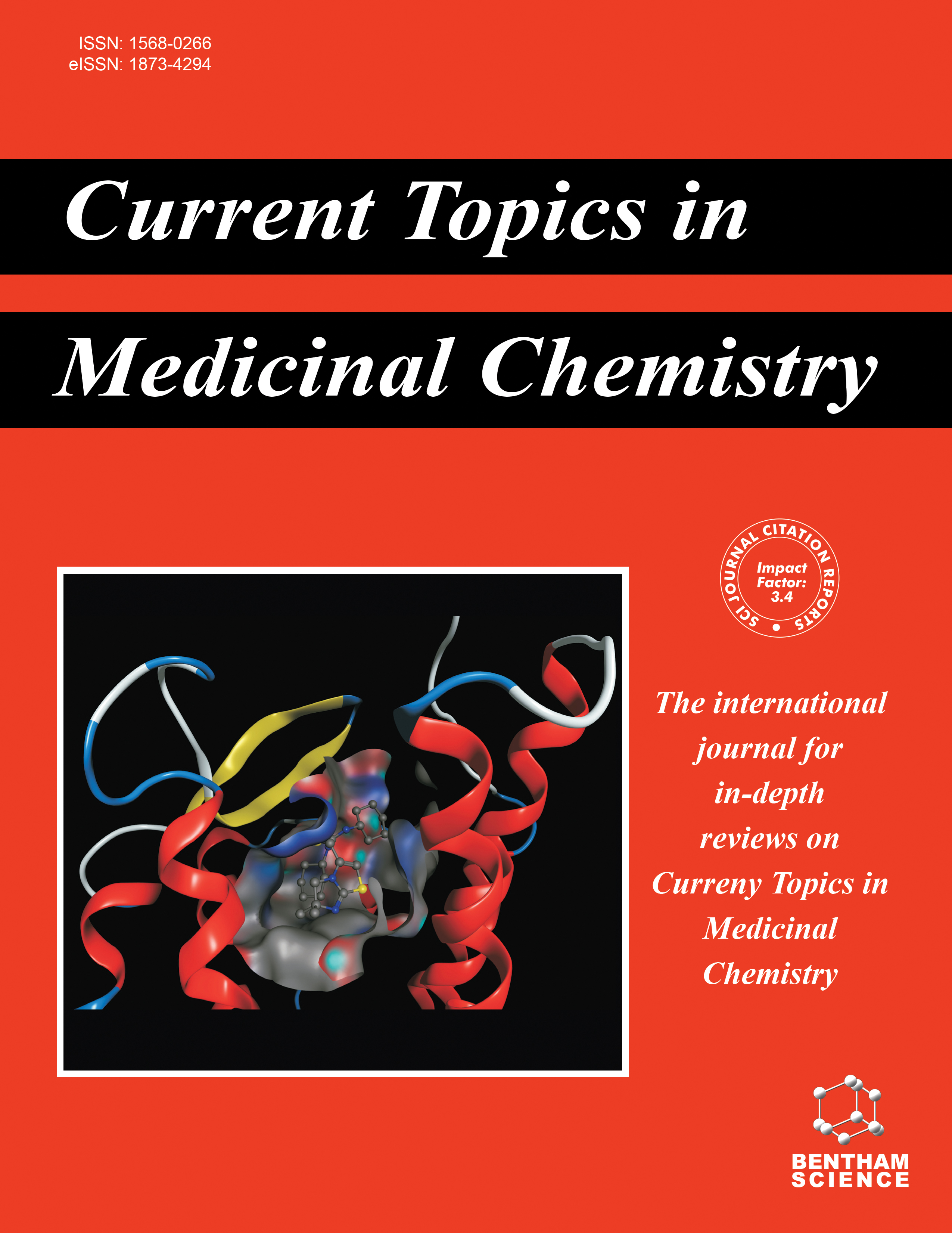- Home
- A-Z Publications
- Current Topics in Medicinal Chemistry
- Previous Issues
- Volume 22, Issue 13, 2022
Current Topics in Medicinal Chemistry - Volume 22, Issue 13, 2022
Volume 22, Issue 13, 2022
-
-
Biofunctionalized Nano--antimicrobials -- Progress, Prospects and Challenges
More LessAuthors: Lutfur Rahman, Sabahat Asif, Ata Ullah, Waheed S. Khan and Asma RehmanThe rapid emergence of multidrug--resistant bacterial strains highlights the need for the development of new antimicrobial compounds/materials to address associated healthcare challenges. Meanwhile, the adverse side effects of conventional antibiotics on human health urge the development of new natural product--based antimicrobials to minimize the side effects. In this respect, we concisely review the recent scientific contri Read More
-
-
-
Production of Effective Phyto-antimicrobials via Metabolic Engineering Strategies
More LessAuthors: Abhishek Sharma, Vyoma Mistry, Vinay Kumar and Pragya TiwariThe emerging outbreak of infectious diseases poses a challenge and threatens human survival. The indiscriminate use and drying pipelines of antibiotic arsenals have led to the alarming rise of drug-resistant pathogens, projecting a serious concern. The rising antimicrobial resistance and redundancy of antibiotic discovery platforms (ADPs) have highlighted the growing concern to discover new antibiotics, necessitating expl Read More
-
-
-
Natural Bioactive Compounds from Medicinal Plants as Antibacterial Drugs: Mechanism Insights and Clinical Perspectives
More LessAuthors: Nasreddine El Omari, Fatima-Ezzahrae Guaouguaou and Abdelhakim BouyahyaThe coevolution in microbes has generated major functional consequences leading bacteria to develop resistance to antibiotics. Indeed, bacterial strains have been able to develop and adapt to the action of antibiotics via several resistance mechanisms. In this context, researchers are currently conducting many studies to screen natural antibacterial substances such as secondary metabolites of medicinal plants. Indeed Read More
-
-
-
Promising Essential Oils/Plant Extracts in the Prevention and Treatment of Dandruff Pathogenesis
More LessAuthors: KM U. Kumari, Narayan Prasad Yadav and Suaib LuqmanBackground: Dandruff is a scalp disorder affecting the male populace predominantly. Topical agents and synthetic drugs used for dandruff treatment have specific side effects including burning at the application site, depression, dizziness, headache, itching or skin rash, nausea, stomach pain, vision change, vomiting, discoloration of hair, dryness or oiliness of the scalp and increased loss of hair. Thus, essential oils and ext Read More
-
Volumes & issues
-
Volume 25 (2025)
-
Volume 24 (2024)
-
Volume 23 (2023)
-
Volume 22 (2022)
-
Volume 21 (2021)
-
Volume 20 (2020)
-
Volume 19 (2019)
-
Volume 18 (2018)
-
Volume 17 (2017)
-
Volume 16 (2016)
-
Volume 15 (2015)
-
Volume 14 (2014)
-
Volume 13 (2013)
-
Volume 12 (2012)
-
Volume 11 (2011)
-
Volume 10 (2010)
-
Volume 9 (2009)
-
Volume 8 (2008)
-
Volume 7 (2007)
-
Volume 6 (2006)
-
Volume 5 (2005)
-
Volume 4 (2004)
-
Volume 3 (2003)
-
Volume 2 (2002)
-
Volume 1 (2001)
Most Read This Month
Article
content/journals/ctmc
Journal
10
5
false
en


